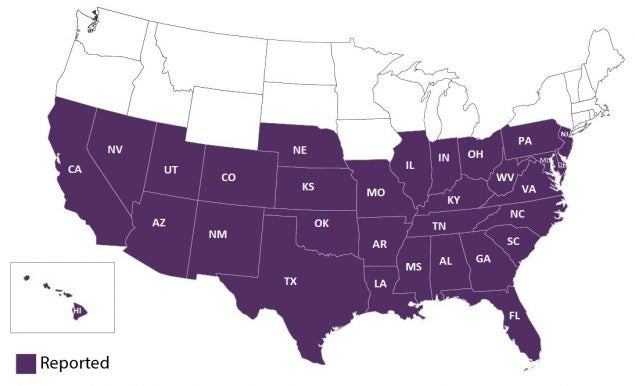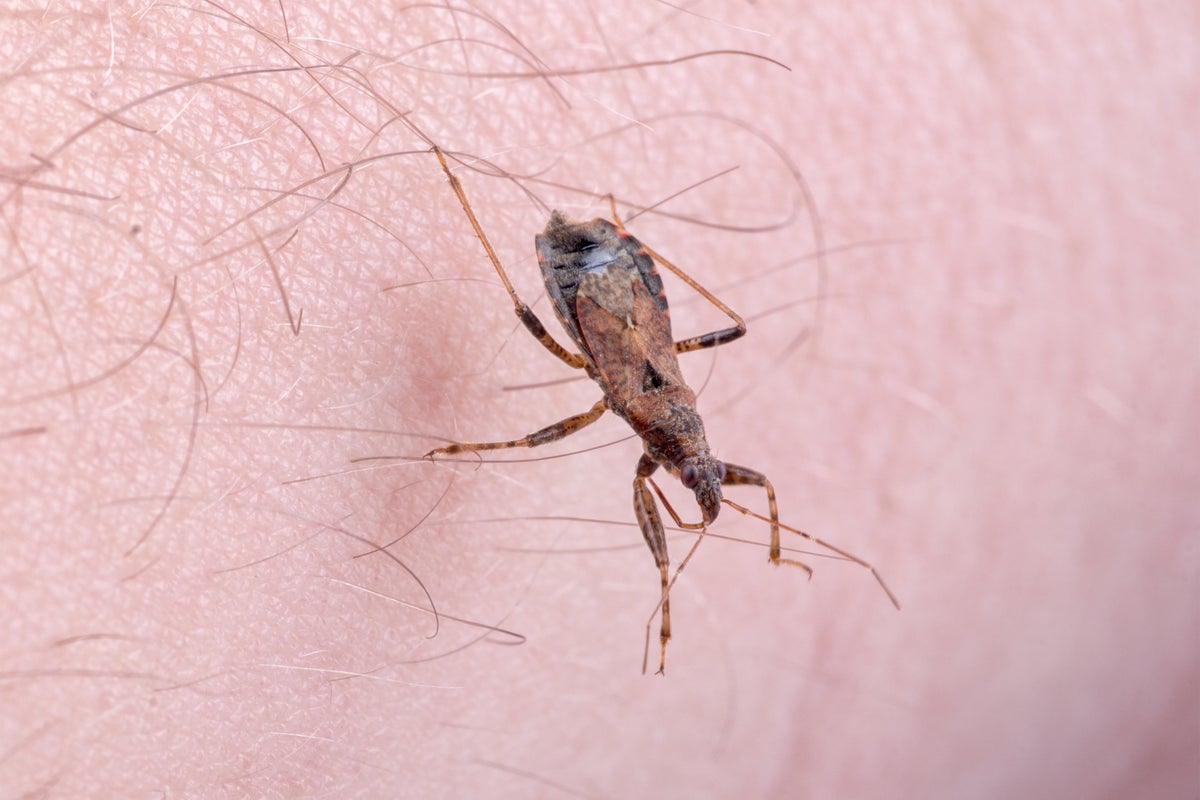Federal health officials are warning Americans to be on alert as a possibly life-threatening parasitic disease continues to spread across southern states.
Chagas disease is passed to humans through blood-sucking parasites known as “kissing bugs,” and more than a quarter of people who become infected will suffer sometimes years-long symptoms that can lead to heart failure or sudden death.
Nearly 30 confirmed cases of Chagas disease were reported in the U.S. from 2000 to 2018. The majority were in Texas, but people were also infected in Arizona, Arkansas, California, Louisiana, Mississippi, Missouri, and Tennessee, according to the Centers for Disease Control and Prevention.
While the disease and its host have long been found in Mexico and Central and South America, researchers said earlier this month that it’s time Chagas became known as regularly occurring within the U.S., as well.
“Classification of Chagas disease as endemic, in particular as hypoendemic, to the United States could improve surveillance, research, and public health responses,” researchers wrote in the CDC’s journal Emerging Infectious Diseases.

How does the disease spread?
The parasite, Trypanosoma cruzi, causes Chagas disease in humans, dogs, and other mammals.
It spreads through the bite of infected bugs as they suck blood or from exposure to their feces. This occurs mainly during the summer months.
Dogs and animals may also become infected by eating the kissing bug, Maryland entomologist Joshua Bast told TRICARE.
The parasite has been found in 32 states stretching from California to Pennsylvania.
Not all kissing bugs are infected. Research from Texas A&M University has shown an average infection rate of 55 percent from over 7,000 kissing bugs tested from 27 different states.

What are its symptoms?
The disease occurs in two states, acute and chronic.
During the acute phase, which occurs within the first weeks or months after infection, symptoms are more mild. Those may include eyelid swelling, fever, fatigue, body and head aches, rash, diarrhea, vomiting, and a loss of appetite.
The chronic phase can last for years or even a lifetime.
Most people have no symptoms but 20 to 30 percent will develop serious problems, including an enlarged heart, colon or esophagus, an irregular heart rate or rhythm, heart failure, and sudden death.
Are there risk factors?

The risk of getting Chagas disease in the United States is extremely low, Dr. Caryn Bern, an epidemiologist at the University of California San Francisco, told The New York Times.
“Most Americans should not be worried at all,” she said.
Some 280,000 Americans were estimated to have the disease in 2022, but only around 10,000 were infected within the U.S., the researchers said in Emerging Infectious Diseases.
People who work in a lab, consume uncooked food that could be contaminated with feces from the parasites, and people who receive organ transplants and blood transfusions are at higher risk of exposure to Chagas disease.
It may also spread from an infected pregnant woman to her baby.
How is it diagnosed and treated?
Only a healthcare provider can diagnose Chagas disease using blood tests.
Left without treatment, Chagas disease can be life-threatening.
Children can be treated at any stage of the disease using two drugs, including Benznidazole and Lampit. The drugs kill the parasite that causes the disease.
For adults, doctors can address symptoms and complications by giving them pacemakers, heart transplants, or surgery.


